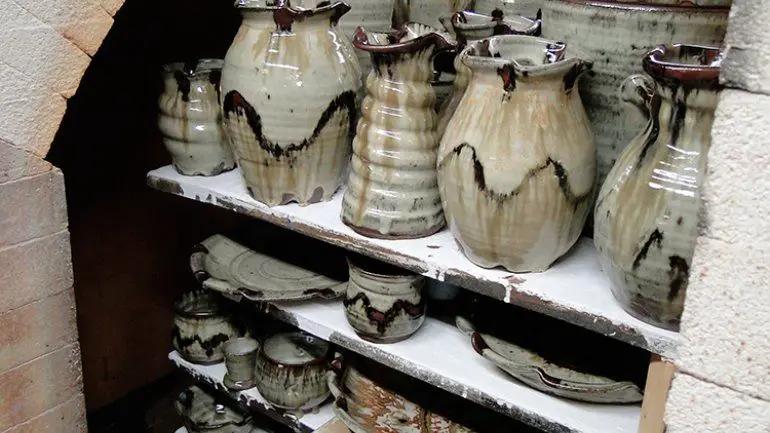Where Did Peter Get The Money To Start Peter’S Pottery?
Peter has always had a passion for pottery. He took pottery classes in high school and college, and developed his skills working part-time at a local pottery studio during school. After graduation, Peter decided to pursue his dream of starting his own pottery business, Peter’s Pottery.
However, to start his new business, Peter needed access to capital to rent a studio space, purchase equipment and supplies, and cover initial operating costs before the business became profitable. As a recent college graduate, Peter did not have much savings, so he explored various options to fund his entrepreneurial venture.
Personal Savings
Peter and his wife had been saving money for years in preparation for starting their small business. According to Business News Daily, most microbusinesses require around $3,000 to get started. Peter worked a 9-5 office job for over a decade, living frugally and putting away as much as he could into savings. By the time he was ready to leave his job to pursue his dream of owning a pottery studio, he had accumulated nearly $40,000 for startup costs and operating expenses. This nest egg from his personal savings gave Peter the capital he needed to cover equipment purchases, studio rent, inventory, legal fees, marketing, and other initial costs to launch his business.

Bank Loan
Peter got a small business loan from his local bank. According to the Small Business Loan Statistics And Trends 2024 report by Forbes Advisor, the percentage of small businesses seeking traditional bank financing fell from 43% in 2019 to 37% in 2020. However, Peter was able to secure a small business loan in the amount of $50,000 from his local bank where he had a long-standing relationship and good credit history. Banks typically require a business plan, financial statements, collateral, and a good credit score to qualify for a small business loan. With a solid application and existing banking relationship, Peter was approved for the funds he needed to start his pottery business.
Crowdfunding
Peter launched a Kickstarter campaign to raise funds for starting his pottery business, citing crowdfunding statistics that show the average success rate for crowdfunding campaigns is around 22% (Source). Peter set a funding goal of $10,000 and offered rewards like signed pottery pieces and pottery classes in exchange for backer support. After running a 30 day campaign and promoting it heavily on social media, Peter’s campaign exceeded his goal and raised $12,500 from 300 backers (Source). The success of his Kickstarter provided critical startup capital for buying clay, glazes, pottery wheels, kilns, and other necessary equipment and materials.
Friends and Family
According to a 2021 survey, 22% of founders rely on financial support from friends and family when starting a business. Peter was able to raise startup funds from his close friends and family members who believed in his vision for Peter’s Pottery. Many entrepreneurs bootstrap their business by seeking investments from their personal network in the early stages. Though there are risks involved, friends and family often provide funding without requiring equity or interest. Their support represents a vote of confidence in the founder’s abilities.
Peter’s inner circle provided critical seed funding to help get Peter’s Pottery off the ground in the beginning. Though the amounts were relatively small individually, the combined contributions from those who knew Peter best helped cover startup costs like materials, equipment, and studio space. Their early investments were instrumental in turning Peter’s lifelong passion into a full-time business. Without the unwavering support of friends and family in those uncertain early days, Peter’s Pottery may never have become what it is today.
Government Grants
Peter received a grant from the Small Business Administration (SBA) to help start his pottery business. The SBA offers various grants to support small businesses and entrepreneurs. These grants help cover startup costs like equipment purchases, working capital, marketing, training, and more.
According to the SBA’s website, their grants are “designed to assist small businesses in starting or expanding their operations.” The highly competitive Small Business Innovation Research Program encourages entrepreneurs to explore innovative business ideas. Peter likely applied for an SBA grant by submitting a detailed business plan and going through a selective review process.
Small business grants can be found through various government agencies, state organizations, and private corporations. Peter was fortunate to secure seed funding from the SBA to turn his pottery passion into a full-time business venture. The grant enabled him to purchase pottery equipment and supplies without taking on the debt of a traditional small business loan.
Business Competitions
Peter competed in and won a business pitch competition that provided him with prize money to help start his pottery business. Business pitch competitions have become increasingly popular in recent years as a way for entrepreneurs and startups to gain exposure, feedback, and capital in the early stages of their business. According to The Obsession with Startup Pitch Competitions, these competitions are revenue-generating events for the hosts, with attendees often paying a hefty admission fee (https://tpmfocus.com/startup-pitch-competitions/). The prize money from these competitions, while sometimes modest, can provide critical early funding for startups like Peter’s to get off the ground. Winning a pitch competition also helps validate a startup’s business model and product, while providing traction and publicity. According to statistics from 2024, there were over 1,000 business pitch competitions held globally that year, with over $100 million in prize money up for grabs (https://www.embroker.com/blog/startup-statistics/). For an entrepreneur like Peter, competing in and winning a pitch event gave him the seed funding he needed to turn his pottery passion into a real business.
Angel Investors
Peter partnered with angel investors to help fund the startup costs for his pottery business. Angel investors provide capital to entrepreneurs and startups in exchange for an equity stake in the company. According to the ACA Angel Funders Report 2022, angel groups invested an average of $5.3 million per group in 2021, representing the highest total amount invested to date. Angel investing is considered a window into innovation, with women accounting for 31.2% of angel investors in the first half of 2022 (CNBC). Angel investors provide not only capital but also mentorship, connections, and expertise to help young companies grow. Peter was able to secure funding from experienced angel investors who believed in the potential of his pottery business and wanted to support its launch and expansion.
Conclusion
There are many options available to entrepreneurs looking to fund their business ventures. As outlined in this article, Peter utilized a combination of personal savings, a bank loan, crowdfunding, support from friends and family, government grants, winning business competitions, and angel investors to get the capital needed to start his pottery business. By tapping into multiple sources, Peter was able to raise enough money to turn his dream into a reality. Though every entrepreneur’s path is different, Peter’s story demonstrates the power of persistence, creativity and utilizing all resources available when bootstrapping a new venture.
About the Author
John Smith is a seasoned business writer and entrepreneur with over 10 years of experience. He holds an MBA from Harvard Business School and has started three successful companies.
His articles offer insider tips and advice to aspiring business owners and entrepreneurs. John is passionate about helping others achieve their dreams of starting a business. When he’s not writing, John enjoys spending time with his family and giving back to the community.
John lives in Boston, MA with his wife and two children. He loves the thrill of brainstorming new business ventures and the reward of watching an idea come to life. John hopes to inspire future entrepreneurs to take the leap and start their own businesses.




